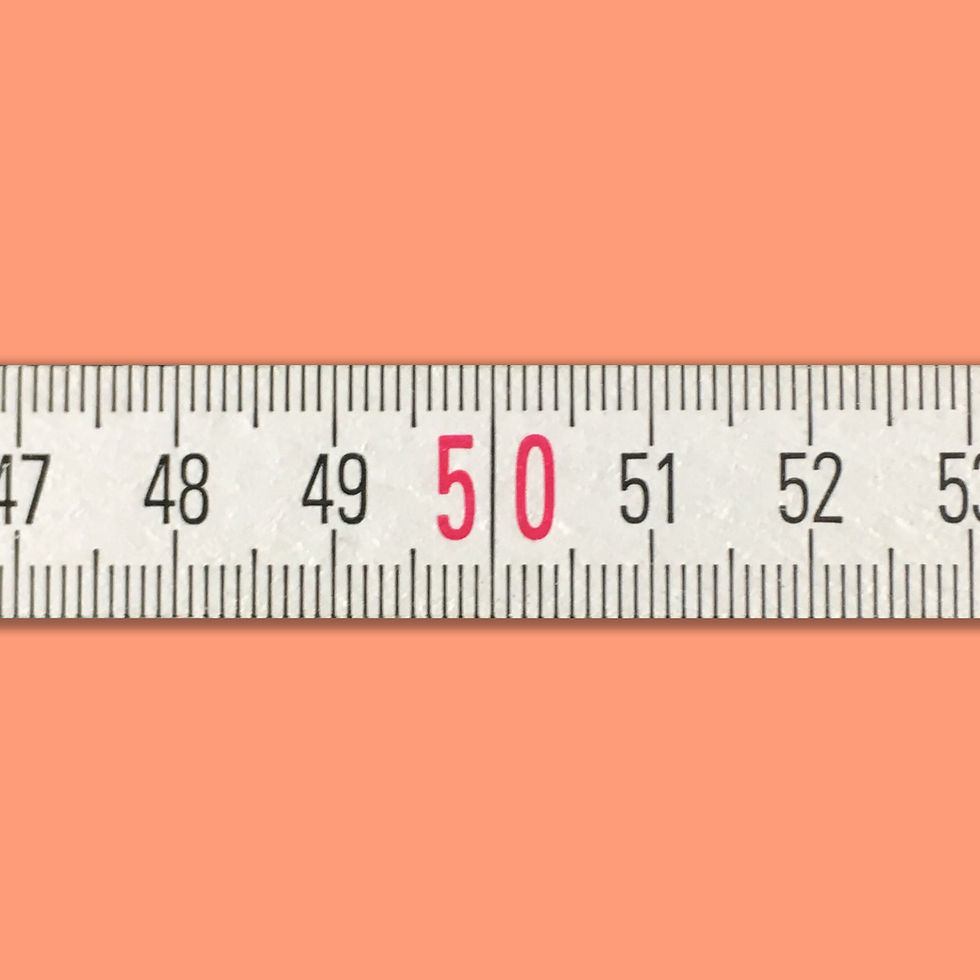Teach significant figures in a more significant way.
- Brennan Koch
- Sep 1, 2023
- 4 min read
In your students’ minds, significant figures are not significant. In fact, they are an insignificant inconvenience. Just a random thing that the chemistry teacher makes us do. But they don’t have to be. I developed a simple way to teach the significance of the numbers that we use. It is also a nice introduction to mathematical modelling in science. Here is the setup.
This is a class competition. The winner will be honored above all others with eternal fame and glory. Ham it up. The goal is to estimate the mass of a segment of spaghetti noodle, the one that I broke at a random length, colored green, and don’t let them touch until the very end. The challenge is that they must tell me the mass, but they may only measure the length of the noodle. While talking to the kids, the recognize that they will have to create a rate of how many grams per centimeter are in spaghetti noodles.
I give each group five whole spaghetti noodles. They are also given a “ruler”. Some groups are given a standard ruler, marked down to the tenths of a centimeter. The rest are given “rulers” that I made from paint sticks. Some of the paint stick rulers are marked every five centimeters. Some just have a single mark in the middle showing 15 cm. The worst ones are just a blank paint stick with “30 cm” written on it. The kids moan and groan, or gloat, when they see what tool they have been given. They can’t cheat. They just have to use the ruler they were given.

The students measure the length of the first noodle whole and takes its mass. Then the second noodle they break into two pieces. The third into three. The fourth into four. And the fifth into five pieces. Now they have 15 data points to collect. Measure the length and record the mass of each little piece. This gives them a good data set to graph.
In the past, I had students graph the points by hand. But since we are a one-to-one school with all students having a laptop and a Microsoft account, I have them graph the points on Excel. This is such a valuable skill in my classes. Create a standard graph with data, then solve for an unknown using the model. It is a pattern that I expect them to be able to do successfully before they leave my class. Measuring spaghetti noodles is a nice way to quickly teach this foundational skill.
Once the students have their data, a trendline, the equation of that line, and the r-squared value, they may measure the Spaghetti Noodle of Mystery. I only give each group four seconds to measure, as I count down dramatically, and the green noodle gets passed around the classroom quickly. The students then use the equation of the trendline to calculate the mass. After all groups have their calculation, it’s time to dramatically weigh the noodle on the analytical scale. With as much fanfare as possible, I announce the true mass.
Once the results are out, I teach the students to calculate percent error. This is also their first time doing that calculation. Then I have every group that has less that 10% error stand up. This is generally the whole class. Then I count down. Every time a group sits down, they show what tool they used. Usually, the crummy paint stick ruler groups are the first out. They continue to whittle down. Once I get to the final three groups, I have them share their tools. Now, as a disclaimer, crazy things can happen. The worst ruler occasionally wins. But you will here the moaning in the class.
“They were just lucky! They could never do it again.”
And all of a sudden, the students just had a significant thought about significant figures. The kids are right! They shouldn’t believe the crummy ruler groups. That is exactly the point. If we all communicate our numbers in exactly the same way, how do we know what tool they used? The best rulers had the best chance of precision. The blank paint sticks were a bunch of guesses. As the students begin to recognize the different values, and dare I say significance, placed on the different measurements, they will feel the need to differentiation within data. It may take some group conversation time, but you can guide them to understand that even through the best ruler got third place and the worst happened to win this time, the scientific validity of the numbers is different.
This activity takes about an hour and then leads directly into our discussion of significant figures. By the time they have felt the sting of defeat or the rosy glow of glory, they understand significant figures in a more significant way.
And that is significantly better than insignificant learning.
Free download below.
Do you want your students having science conversations about the content? In groups? Without you hovering over them? Try playing content-driven chemistry games.
Up & Atom is a great way to introduce stoichiometry. CHeMgO helps students enjoy getting reps writing ionic formulas.
And our newest game, Trendy, uses five different periodic trends in a face-paced game. You can get out of the way and watch the engagement of the students rise!






Greetings! I am really excited to use this activity! I need them to do the graphing by hand and not use Excel. Do you have a version of this with instructions for doing it without a computer? THANK YOU for all that you share!!
This sounds like a great activity! I was looking for something more hands on and different than just setting up measuring stations for sig figs and I can't wait to try this. Random question - where do you get your paint sticks?
Great activity! Just did it with the class, they enjoyed it and learned significance too!
I'm so glad this landed in my inbox this morning! I immediately put it in my lesson plans for October.
Question: What is the reasoning behind having every group record to 2 decimal places? I teach degree of uncertainty and that their recorded data should always reflect the precision of their measurement equipment.
Love the activity though and much quicker/more unique than using water in graduated cylinders for sig figs!